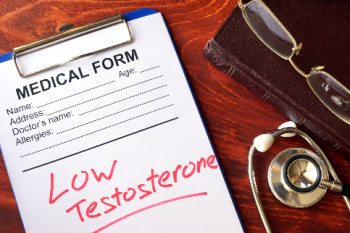
Men in the United States have had the option of taking an oral form of testosterone for about a year and a half now. Recently, scientists published more of their research results.
The drug – testosterone undecanoate - is marketed under the brand name Jatenzo. It was approved by the U.S. Food and Drug Administration (FDA) in March 2019 for men with hypogonadism (low testosterone) caused by health conditions such as Klinefelter syndrome and pituitary gland tumors. It is not approved for men with age-related testosterone deficiency. (Note: Low testosterone is usually diagnosed when levels fall below 300 ng/dL.)
Men on testosterone replacement therapy have several options for taking their medicine. Each route has its pros and cons. For example, testosterone gel can be applied to the body, but it can irritate the skin. Men must also be careful that women and children do not come into contact with topical testosterone. Injections are another option, but some men find them uncomfortable.
Researchers noted that taking Jatenzo, a pill form, might be more convenient.
The study, published earlier this year in the Journal of Clinical Endocrinology & Metabolism, was part of a phase 3 clinical trial designed to analyze the drug’s efficacy and short-term safety.
Overall, 222 men between the ages of 18 to 65 participated in the trial, which lasted four months. All of the men had been diagnosed with hypogonadism. One hundred sixty-six men were assigned to take Jatenzo; the remaining 56 men used a topical testosterone gel for the same time period.
Across both groups, 87% of the men had testosterone level increases that brought them to a normal range.
About 19% in the oral testosterone group and 15% of the topical gel group had side effects believed to come from the treatment. None of these side effects were considered serious, but they did prompt about 2% of the men in each group to leave the study. None of the men died.
Some of the more common side effects of the oral testosterone were headache, elevated levels of red blood cells, and upper respiratory tract infections.
Hypertension (high blood pressure) was another concern for men in the oral testosterone group. The mean increase in systolic blood pressure was 3 to 5 mm Hg for these men. (Systolic blood pressure refers to the amount of pressure that blood exerts against artery walls as the heart beats. It is the “first number” reported when blood pressure is measured.)
“The clinical significance of a 3 to 5 mm Hg rise in systolic [blood pressure] in hypogonadal men who have increased cardiovascular risk as result of long-standing [testosterone] deficiency is unclear,” the authors wrote.
The FDA has recommended that doctors check a patient’s blood pressure history before prescribing Jatenzo. At the time of approval, the FDA required package labeling to include a boxed warning about blood pressure concerns. Boxed warnings alert consumers to serious or potentially life-threatening risks.
Resources
American Heart Association
“Understanding Blood Pressure Readings”
https://www.heart.org/en/health-topics/high-blood-pressure/understanding-blood-pressure-readings
Journal of Clinical Endocrinology & Metabolism via Medscape
Swerdloff, Ronald S., et al.
“A New Oral Testosterone Undecanoate Formulation Restores Testosterone to Normal Concentrations in Hypogonadal Men”
(2020)
You may also be interested in...
Other Popular Articles

What Is the Average Penis Size?
If you have ever wondered how your penis compares to others in terms of size, you are not alone. Many men are curious to know how their penises stack up compared to the average. Unfortunately, general curiosity can sometimes give way to full-on obsession and anxiety about penis size. This can be an unhealthy and often unnecessary fixation, especially because most men who think their penises are too small have perfectly normal-sized penises.

What Is Jelqing, and Does It Actually Work?
The term “jelqing” refers to a set of penis stretching exercises that some believe can make the penis bigger. Although the practice has gained attention and popularity in blogs and internet forums in recent years, there is no scientific evidence that it is an effective way to permanently increase the size of one’s penis. In fact, in some cases, jelqing may actually cause damage to the penis, so it is a good idea to get all the facts before setting off to try it.

What Is Sensate Focus and How Does It Work?
Sensate focus is a technique used to improve intimacy and communication between partners around sex, reduce sexual performance anxiety, and shift away from ingrained, goal-oriented sexual patterns that may not be serving a couple.

Can Sex Reduce Menstrual Cramps?
The SMSNA periodically receives and publishes ‘guest editorials.’ The current article was submitted by Mia Barnes, a freelance writer and researcher who specializes in women's health, wellness, and healthy living. She is the Founder and Editor-in-Chief of Body+Mind Magazine.
Having sex while you experience menstrual cramps is healthy and can provide significant benefits. While it might not be the first activity that comes to mind when your PMS or period cramping begins, many people enjoy sex to reduce menstrual cramps, experience increased pleasure and benefit from other advantages. Learn more about having sex while menstrual cramps are happening and how it can help your body.

How Long Does It Take the Average Man to Ejaculate?
On average, it takes a man between 5 to 7 minutes to orgasm and ejaculate during sexual intercourse.

The Effect of Regular Aerobic Exercise on Erectile Function
Erectile dysfunction (ED) is the inability to achieve or maintain an erection sufficient for satisfactory sexual activity. As men get older, their erectile functioning may naturally decline due to changes in testosterone levels, cardiovascular functioning, and the potential development of other chronic medical conditions that become more common with age.
You are prohibited from using or uploading content you accessed through this website into external applications, bots, software, or websites, including those using artificial intelligence technologies and infrastructure, including deep learning, machine learning and large language models and generative AI.

